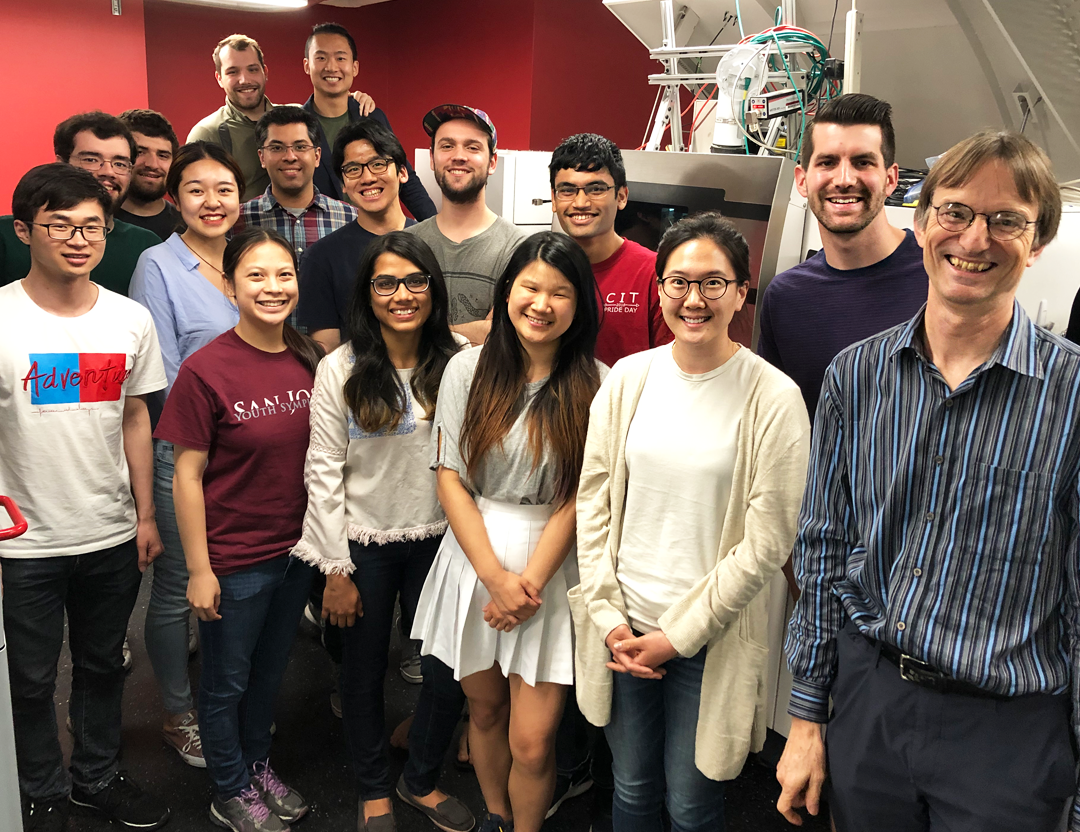Rollett receives $2.4M from ARPA-E for 3D printing research
A team led by Tony Rollett has received a $2.4 million grant from the U.S. Department of Energy’s Advanced Research Projects Agency – Energy (ARPA-E), supporting high temperature materials and heat exchanger projects.
Led by Tony Rollett, a professor of materials science and engineering, a team at Carnegie Mellon University is working to create high temperature heat exchangers using new methods and techniques for 3D printing. They have received a $2.4 million grant from the U.S. Department of Energy’s Advanced Research Projects Agency – Energy (ARPA-E) as one of 18 projects being supported for high-temperature materials projects. It is part of the High Intensity Thermal Exchange through Materials and Manufacturing Processes (HITEMMP) program.
This collaborative project includes advances in materials research, additive manufacturing, and heat exchanger design. Rollett’s lab at Carnegie Mellon is partnering with Vinod Narayanan’s group at the University of California, Davis on heat exchanger design and analysis. The team also includes a national lab and five industrial partners.

Source: College of Engineering
Rollett and his team in the 3D printing lab space.
Heat exchangers are devices that transfer heat from one fluid to another without the two fluids coming into contact with one another. They are commonly used in engines of cars, ships, and planes, and as heating and cooling systems, including air conditioners and refrigerators. The overall ARPA-E initiative is supporting the creation of critical heat exchangers for thermal energy use in electricity, nuclear reactors, and transportation, among others. The grant will bolster Rollett’s research for three years and financially support Ph.D. students.
Rollett is developing high temperature heat exchangers that pass strength requirements at 850 degrees Celsius. The exchangers must operate at these high temperatures and pressures because the working fluid is going to be supercritical carbon dioxide. In addition to maintaining strength, the exchangers must also resist corrosion by the gas. These necessary characteristics mean that currently, the only choice of material is a nickel superalloy, the same material found inside gas turbine engines.
“The particular challenge is that we have to be able to print these heat exchangers because the only way to make them efficient enough, and in fact modular enough, is through 3D printing,” said Rollett. “The 3D printing allows us to have much more variation in the geometry, much more arbitrary geometry.”
As part of the project, Rollett will also explore different alloys and materials that haven’t been used before. “We’re trying to introduce alloys that can be 3D-printed that have significantly higher temperature capability compared to the standard ones that everybody knows about.”
This is a wonderful opportunity to demonstrate how 3D-printing helps in an advanced application.
Tony Rollett, Professor, Materials Science & Engineering
The challenge is that there are many alloys, each that vary in composition, properties, and how they are processed. Due to the large amounts of information about these materials, the project presents an opportunity for machine learning, at least in a broad sense.
“Instead of picking some alloy and saying, ‘this looks as if it might do the job,’ and then perhaps discovering that we can’t print it, I’d rather try to put it into some systematic format and a database of some kind,” said Rollett. “So if something doesn’t work out, I can step back to the next candidate.”
The grant signals a step in sustaining the development of 3D metals printing at Carnegie Mellon, especially in high-temperature materials, an area the Department of Materials Science and Engineering previously has not been very active in. Overall, it will also contribute to acquiring new skills and help maintain the department’s 3D metals printing facility.
“This is a wonderful opportunity to demonstrate how 3D printing helps in an advanced application, and it also gives us an opportunity to, if not develop brand new alloys, at least bring new and different alloy compositions into 3D printing,” said Rollett.
